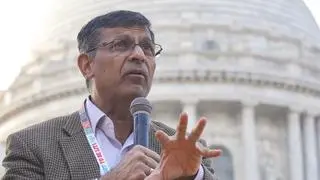The All-India HPI increased by 2.7 per cent year-on-year (yoy) in Q4FY21 vis-a-vis 3.9 per cent growth a year ago, according to the Reserve Bank of India’s quarterly HPI.
HPI growth showed large variation across major cities, from an increase of 15.7 per cent (Bengaluru) to a contraction of (-)3.6 per cent (Jaipur).
HPI is based on transaction-level data received from housing registration authorities in ten major cities —Ahmedabad, Bengaluru, Chennai, Delhi, Jaipur, Kanpur, Kochi, Kolkata, Lucknow and Mumbai.
On a sequential (q-o-q) basis, all-India HPI growth rate moderated to 0.2 per cent in Q4FY21, RBI said in a statement.
Delhi, Bengaluru, Kolkata and Jaipur recorded a sequential decline in HPI, whereas it increased for other cities.
Slowing demand
A recent Confederation of Real Estate Developers’ Associations of India (CREDAI) survey report highlighted changing consumer behaviour, resulting in slowing of demand due to decrease in enquires and site visits.
A staggering 98 per cent of the developers surveyed are facing reduced customer enquiries and 42 per cent developers are experiencing a 75 per cent decline in customer enquiries, the report said.
Furthermore, the report reveals that the second wave has caused 95 per cent of the customers to postpone their purchase decisions.
Also read: RBI showers its blessings on local audit firms
According to the survey, which saw participation from 4,813 developers from 217 cities, over 95 per cent developers feel project delays are inevitable if no urgent relief measures are given to the sector by the Government and the RBI.
“These delays are attributed to a range of factors, with 92 per cent developers experiencing labor shortage at sites, 83 per cent developers are working with less than half the workforce, and over 82 per cent of developers are facing project approval delays,” the report said.
CREDAI underscored that added factors such as recent spike in construction materials including steel, cement etc have contributed to more than 10 per cent increase in construction cost for more than 88 per cent developers.
“Various financial constraints and liquidity crunch are further adding to the problem, with 77 per cent developers experiencing issues in servicing of existing loans, 85 per cent developers facing disruptions in planned collection, and 69 per cent are facing issues in disbursement of customer home loans,” the report said.







Comments
Comments have to be in English, and in full sentences. They cannot be abusive or personal. Please abide by our community guidelines for posting your comments.
We have migrated to a new commenting platform. If you are already a registered user of TheHindu Businessline and logged in, you may continue to engage with our articles. If you do not have an account please register and login to post comments. Users can access their older comments by logging into their accounts on Vuukle.